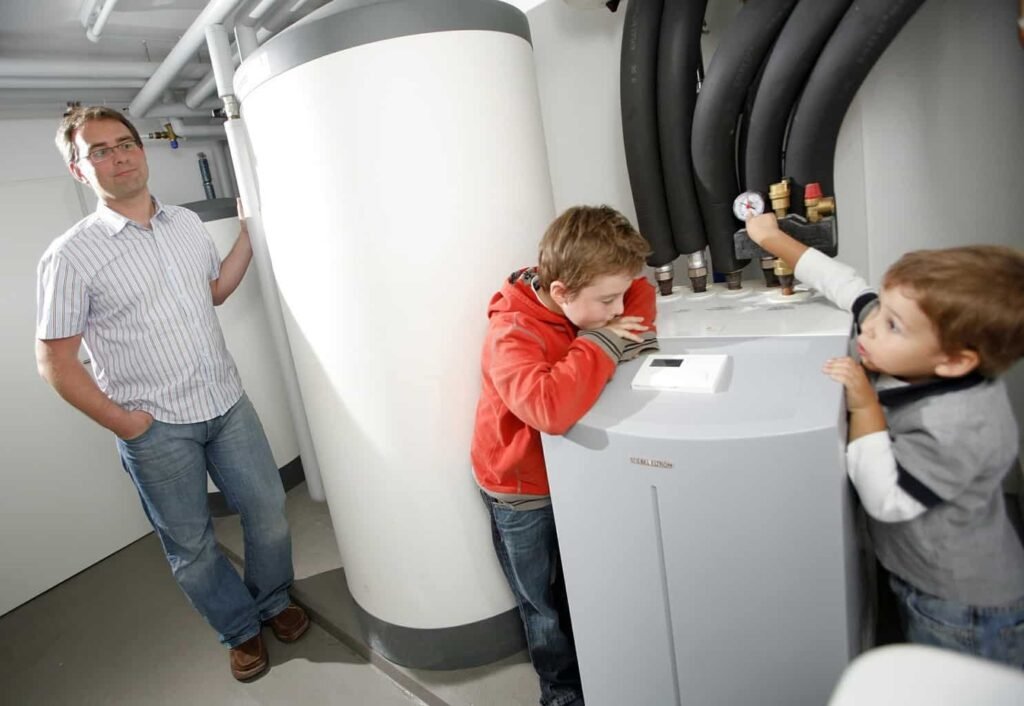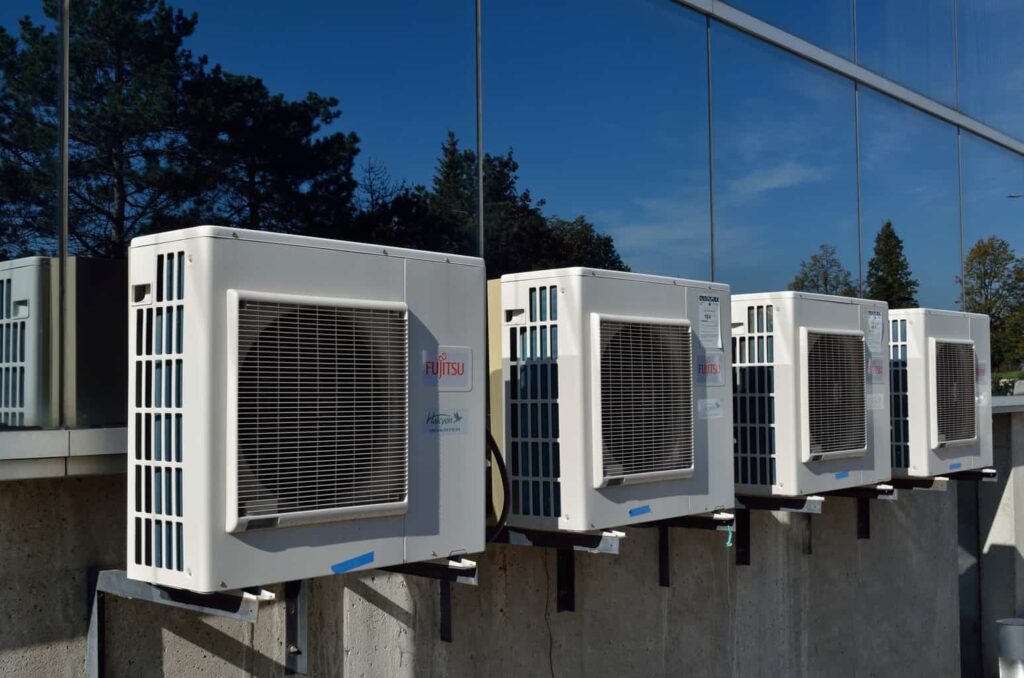There is a wide range of pricing for floor systems based on regional differences, materials, application and project complexity. It is widely adopted in the Nordic, Asian and European communities. Consequently, the market is more mature and systems relatively more affordable than less developed markets such as North America where market share for fluid based systems remains between 3% to 7% of HVAC systems.
In energy efficiency buildings such as Passive House, R-2000 or Net Zero Energy, simple thermostatic radiator valves can be installed along with a single compact circulator and small condensing heater controlled without or with basic hot water reset control.
Economical electric resistance based systems also are useful in small zones such as bathrooms and kitchens, but also for entire buildings where heating loads are very low. Larger structures will need more sophisticated systems to deal with cooling and heating needs, and often require building management control systems to regulate the energy use and control the overall indoor environment.
Low temperature radiant heating and high temperature radiant cooling systems lend themselves well to district energy systems (community based systems) due to the temperature differentials between the plant and the buildings which allow small diameter insulated distribution networks and low pumping power requirements. The low return temperatures in heating and high return temperatures in cooling enable the district energy plant to achieve maximum efficiency. The principles behind district energy with floor systems can also be applied to stand alone multi story buildings with the same benefits.
Additionally, floor radiant systems are ideally suited to renewable energy sources including geothermal and solar thermal systems or any system where waste heat is recoverable.
In the global drive for sustainability, long term economics supports the need to eliminate where possible, compression for cooling and combustion for heating. It will then be necessary to use low quality heat sources for which radiant floor heating and cooling is well suited.
When using plastic push-fit fittings for floor heating, plumbers have recorded that they are saving up to 40% in installation time when compared to traditional methods. Which not only saves installation time but customers money also, making it the most cost-effective form of floor heating.
System efficiency
System efficiency and energy use analysis takes into account building enclosure performance, efficiency of the heating and cooling plant, system controls and the conductivities, surface characteristics, tube/element spacing and depth of the radiant panel, operating fluid temperatures and wire to water efficiency of the circulators. The efficiency in electric systems is analyzed by similar processes and includes the efficiency of electricity generation.
Though the efficiency of radiant systems is under constant debate with no shortage of anecdotal claims and scientific papers presenting both sides, the low return fluid temperatures in heating and high return fluid temperatures in cooling enable condensing boilers, chillers and heat pumps to operate at or near their maximum engineered performance. The greater efficiency of ‘wire to water’ versus ‘wire to air’ flow due to water’s significantly greater heat capacity favors fluid based systems over air based systems. Both field application and simulation research have demonstrated significant electrical energy savings with radiant cooling and dedicated outdoor air systems based in part on the previous noted principles.
In Passive Houses, R-2000 homes or Net Zero Energy buildings the low temperatures of radiant heating and cooling systems present significant opportunities to exploit exergy.
Efficiency considerations for flooring surface materials
System efficiency is also affected by the floor covering serving as the radiational boundary layer between the floor mass and occupants and other contents of the conditioned space. For example, carpeting has a greater resistance or lower conductance than tile. Thus carpeted floors need to operate at higher internal temperatures than tile which can create lower efficiencies for boilers and heat pumps. However, when the floor covering is known at the time the system is installed, then the internal floor temperature required for a given covering can be achieved through proper tube spacing without sacrificing plant efficiency (though the higher internal floor temperatures may result in increased heat loss from the non-room surfaces of the floor).
The emissivity, reflectivity and absorptivity of a floor surface are critical determinants of its heat exchange with the occupants and room. Unpolished flooring surface materials and treatments have very high emissivity’s (0.85 to 0.95) and therefore make good heat radiators.
With floor heating and cooling (“reversible floors”) flooring surfaces with high absorbance and emissivity and low reflectivity are most desirable.
Thermographic evaluation
Thermographic images of a room heated with low temperature radiant heating shortly after starting up the system
Thermography is a useful tool to see the actual thermal efficacy of an floor system from its start up (as shown) to its operating conditions. In a startup it is easy to identify the tube location but less so as the system moves into a steady state condition. It is important to interpret thermographic images correctly. As is the case with finite element analysis (FEA), what is seen, reflects the conditions at the time of the image and may not represent the steady conditions. For example, the surfaces viewed in the images shown, may appear ‘hot’, but in reality are actually below the nominal temperature of the skin and core temperatures of the human body and the ability to ‘see’ the pipes does not equate to ‘feel’ the pipes. Thermography can also point out flaws in the building enclosures, thermal bridging and the heat losses associated with exterior doors.
(Written using Wikipedia data & knowledge)





